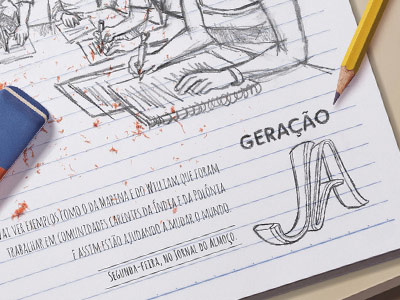Asch's seminal research on "Forming Impressions of Personality" (1946) has widely been cited as providing evidence for a primacy-of-warmth effect, suggesting that warmth-related judgments have a stronger influence on impressions of personality than competence-related judgments (e.g., Fiske, Cuddy, & Glick, 2007; Wojciszke, 2005).Because this effect does not fit with Asch's Gestalt-view . A minority of one against a unanimous majority. Is a forceful person, has his own convictions and is usually right about things. Pittsburgh PA: Carnegie Press; 1951. While the results are, for reasons to be described, less clear than in the experiment preceding, there is still a definite tendency for A to produce a more favorable impression with greater frequency. Apparently, people conform for two main reasons: because they want to fit in with the group (normative influence) and because they believe the group is better informed than they are (informational influence). 214 0 obj <>stream The Halo effect experiment by Solomon Asch. According to this perspective, a person constructs their own cognitive structures from interactions with their physical and social environment. Content is fact checked after it has been edited and before publication. If we assume that the process of mutual influence took place in terms of the actual character of the qualities in question, it is not surprising that some will, by virtue of their content, remain unchanged. He believed the main problem with Sherifs (1935) conformity experiment was that there was no correct answer to the ambiguous autokinetic experiment. We propose now to investigate more directly the manner in which the content of a given characteristic may undergo change. PRIMACY AND RECENCY EFFECT ON PERSONALITY IMPRESSION - Academia.edu There are a number of theoretical possibilities for describing the process of forming an impression, of which the major ones are the following: 1. In reality, all but one of the participants were working for Asch (i.e. 6.5C: The Asch Experiment- The Power of Peer Pressure The intelligent person is gay in an intelligent way. University of Pennsylvania. Each trait produces its particular impression. In psychological terms, conformity refers to an individual's tendency to follow the unspoken rules or behaviors of the social group to which they belong. Many negative qualities could quite understandably be living together with those given. We conclude that the formation and change of impressions consist of specific processes of organization. Norman Anderson. 2. This man does not seem so bad as the first one. Asch's social psychology: not as social as you may think . In: Kimble GA, Wertheimer M, eds.,Portraits of pioneers in psychology, Vol. This was the tenor of most statements. We then discover a certain constancy in the relation between them, which is not that of a constant habitual connection. He is impatient at people who are less gifted, and ambitious with those who stand in his way. When we are uncertain, it seems we look to others for confirmation. He is fast but accomplishes nothing. The elaboration likelihood model of persuasion. The quickness of 1 is one of assurance, of smoothness of movement; that of 2 is a forced quickness, in an effort to be helpful. Solomon Asch was a pioneering social psychologist who is perhaps best remembered for his research on the psychology of conformity. Forming Impressions of Personality: A Replication and Review of Asch's Let us briefly reformulate the main points in the procedure of our subjects: 1. When the subject selected a certain trait as central (or when he deposed a once central trait to a minor role within a new context) it is by no means clear that he was guided by specific, acquired rules prescribing which traits will be central in each of a great number of constellations. There were 18 trials in total, and the confederates gave the wrong answer on 12 trials (called the critical trials). This statement expresses for our problem a principle formulated in gestalt theory with regard to the identity of parts in different structures (8, 10). Further, Proposition Ia conceives the process in terms of an imposed affective shift in the evaluation of separate traits, whereas Proposition II deals in the first instance with processes between the traits each of which has a cognitive content. 1. If the participant gave an incorrect answer, it would be clear that this was due to group pressure. As conformity drops off with five members or more, it may be that its the unanimity of the group (the confederates all agree with each other) which is more important than the size of the group. ASCH, S. E. Studies in the principles of judgments and attitudes: II. Memes psychology students will love. Morgan TJ, Laland KN. He impresses people as being more capable than he really is. Model Answer for Question 4 Paper 1: AS Psychology, June 2016 - tutor2u Milgram S. Behavioral study of obedience. Saul Mcleod, Ph.D., is a qualified psychology teacher with over 18 years experience of working in further and higher education. Psych Experiments: From Pavlov's Dogs to Rorschach's Inkblots. Rock, Irvin, ed. From 1966 to 1972, Asch held the title of director and distinguished professor of psychology at the Institute for Cognitive Studies at Rutgers University. 3. It is a way of understanding social cognition that focuses on the individual and their psychological processes. A control group (Group 2) responded only to the entire list of six terms (as in Series A of Experiment VI), and answered some of the final questions. The next characteristic comes not as a separate item, but is related to the established direction. They were also asked to comment on the relation between the two impressions. On the third trial, all the confederates would start giving the same wrong answer. J Abnorm Soc Psychol. Though he hears a sequence of discrete terms, his resulting impression is not discrete. We do not experience anonymous traits the particular organization of which constitutes the identity of the person. V. The term "gay" was compared in the following series: Twenty-seven of 30 subjects call "gay" different. We shall now inquire into some of the factors that determine the content and alteration of such impressions. The meaning of stereotype is itself badly in need of psychological clarification. Solomon Asch was a pioneering social psychologist who is perhaps best remembered for his research on the psychology of conformity. Asch took a Gestalt approach to the study of social behavior, suggesting that social acts needed to be viewed in terms of their setting. The change of a central trait may completely alter the impression, while the change of a peripheral trait has a far weaker effect (Experiments I, II, and III). BSc (Hons), Psychology, MSc, Psychology of Education. Asch was interested to see if the real participant would conform to the majority view. Asch concluded that impression formation reected a Gestalt-like process of seeking meaning from a stimulus array(e.g.,Khler,1929),andnotanelement-drivenprocessinwhich The purpose of the Asch conformity experiment was todemonstrate the power of conformity in groups. Solomon Asch Is Dead at 88; A Leading Social Psychologist. All agreed that they felt such a tendency. We also acknowledge previous National Science Foundation support under grant numbers 1246120, 1525057, and 1413739. The frequent reference to the unity of the person, or to his "integration," implying that these qualities are also present in the impression, point in this direction. Forming impressions of personality. 3. Wishner (1960) refutes Asch's explanation of the findings of his warm-cold experiments, in terms of the centrality and organizing power of the variable concept, by showing that the differential performance of subjects on a checklist, following exposure to one of the variable terms, is predictable from the independently ascertained correlations In this we were guided by an informal sense of what traits were consistent with each other. It refers to a characteristic form of action or attitude which belongs to the person as a whole. The second and third terms in Sets 1 and 2 below were compared, respectively. In the experiments to be reported the subjects were given a group of traits on the basis of which they formed an impression. HULL, C. L. The discrimination of stimulus configurations and the hypothesis of afferent neural interaction. In order to ensure that the average person could accurately gauge the length of the lines, the control group was asked to individually write down the correct match. Test. Some of the terms were taken from written sketches of subjects in preliminary experiments. The central tenet of this research is that particular information we have about a person, namely the traits we believe they possess, is the most important factor in establishing our overall impression of that person. The instructions were to write down synonyms for the given terms. To this end we constructed a check list sense of what was fitting or relevant. asch's configural model simply psychology His results and conclusions are given below: Asch (1956) found that group size influenced whether subjects conformed. Brown and Byrne (1997) suggest that people might suspect collusion if the majority rises beyond three or four. According to Kurt Lewin, behavior is determined in part by: Emotion Experience Motivation Asch also supervised Stanley Milgram's Ph.D. at Harvard University and inspired Milgram's own highly influential research on obedience. We see that qualities which, abstractly taken, are identical, are infrequently equated, while qualities which are abstractly opposed are equated with greater frequency. the following responses are obtained: (a) 33 of 52 subjects answer that they formed a new impression, different from either A or B; 12 subjects speak of combining the two impressions, while 7 subjects assert that they resorted to both procedures. Introduction to social psychology. Given the quality "quick" we cannot unequivocally infer the quality "skillful"; but given "quick-skillful" we try to see how one grows out of the other. PDF Configural information in facial expression perception Verywell Mind uses only high-quality sources, including peer-reviewed studies, to support the facts within our articles. 2. We illustrate our procedure with one concrete instance. a. The following will show that the subjects generally felt the qualities "warm-cold" to be of primary importance. B (comprising four separate classroom groups). We have used a variety of methods and tools to investigate configural processing: . Further, experiments we have not here reported showed unmistakably that an identical series of traits produced distinct impressions depending on whether we identified the person as a man or woman, as a child or adult. A very ambitious and talented person who would not let anyone or anything stand in the way of achieving his goal. McCauley C, Rozin P. Solomon Asch: Scientist and humanist. Kendra Cherry, MS, is an author and educational consultant focused on helping students learn about psychology. It would be a possible hypothesis that in the course of forming an impression each trait interacts with one or more of the others, and that the total impression is the summation of these effects. The check-list data appearing in Table 7 furnish quantitative support for the conclusions drawn from the written sketches. Further, it seems probable that these processes are not specific to impressions of persons alone. Asch's experiments involved having people who were in on the experiment pretend to be regular participants alongside those who were actual, unaware subjects of the study. Perrin and Spencer used science and engineering students who might be expected to be more independent by training when it came to making perceptual judgments. His famous conformity experiment demonstrated that people would change their response due to social pressure in order to conform to the rest of the group., "The human mind is an organ for the discovery of truths rather than of falsehoods." Worth Publishers. PDF FISKE & TAYLOR / SOCIAL COGNITION: FROM BRAINS TO CULTURE 2e The Legacy of Solomon Asch: Essays in Cognition and Social Psychology. Hillsdale, New Jersey: Lawrence Erlbaum Associates. Elucidating Experiments: Asch's Configural Model | Cognitive Consonance 2015 In-text: (Elucidating Experiments: Asch's Configural Model | Cognitive Consonance, 2015) Such an interpretation would, however, contain an ambiguity. He is driven by the desire to accomplish something that would be of benefit. The perceiver re-interprets "friendly" as calculating or sly, making the traits fit well together into . Asch, S. E. (1951). The protocols Below, which are typical, will show that the "quicks" of Sets 1 and 2 are phenomenally different, and similarly for the "slows" of Sets 3 and 4. It's that simple. This man is courageous, intelligent, with a ready sense of humor, quick in his movements, but he is also serious, energetic, patient under stress, not to mention his politeness and punctuality. The differences between "warm" and "cold" are now even more considerable than those observed in Experiment I. This holds for the qualities of (1) generosity, (2) shrewdness, (3) happiness, (4) irritability, (5) humor, (6) sociability, (7) popularity, (10) ruthlessness, (15) self-centeredness, (16) imaginativeness. During the early years of World War II when Hitler was at the height of power, Solomon Asch began studying the impact of propaganda and indoctrination while he was a professor at Brooklyn College's psychology department. Asch went on to conduct further experiments in order to determine which factors influenced how and when people conform. This factor is not, however, to be understood in the sense of Ebbinghaus, but rather in a structural sense. In Series A the quality "warm" is now seen as wholly dependent, dominated by others far more decisive. There are two groups; one group is instructed to select from the check list those characteristics which belong to a "warm" person, the second group those belonging to a "cold" person. Unlike the preceding series, there is no gradual change in the merit of the given characteristics, but rather the abrupt introduction at the end (or at the beginning) of a highly dubious trait. As I have set down the impressions, one is exactly the opposite of the other. One quality"helpful"remains constant in all sets. These 12 were known as the critical trials. configural model, they did not rule out the idea of configural encoding of facial affect altogether. The next trait is similarly realized, etc. I can afford to be quick; 2 would be far better off if he took things more slowly. Indeed, they seem to support each other. The distribution of choices for the total group (see Table 2, column labeled "Total") now falls between the "warm" and "cold" variations of Experiment I. This we do in the following experiment. In terms of gender, males show around half the effect of females (tested in same-sex groups). (3) Upon completion of the second task the subjects were informed that the two lists described a single person. In the protocols we observe a process of mutual determination between traits. I. Here the important question for theory is whether the factors of past experience involve dynamic processes of the same order that we find at work in the momentary impression, or whether these are predominantly of the nature of associative bonds. %%EOF Testing for Measurement Invariance: Does your measure mean the same In two experiments, we examined two related conditioning problems previously investigated by Red-head and Pearce (1995a) and Pearce, Aydin, and Redhead (1997). The latter result is of interest with reference to one possible interpretation of the findings. B. cruel shrewd unscrupulous calm strong. How could we be sure that a person conformed when there was no correct answer? A glance, a few spoken words are sufficient to tell us a story about a highly complex matter. Each person confronts us with a large number of diverse characteristics. He would tend to be an opportunist. The latter formulations are true, but they fail to consider the qualitative process of mutual determination between traits, namely, that a central trait determines the content and the functional place of peripheral traits within the entire impression. Asch (1946) conducted a study where, he had two groups, in which both were given lists of words in different orders according to which group the participants were assigned to. All traits do not have the same rank and value in the final impression. In L. Berkowitz (Ed. By Kendra Cherry The whole system of relations determines which will become central. We conclude that a quality, central in one person, may undergo a change of content in another person, and become subsidiary. Configural Processing | Psychology | University of Southampton B. Configural model 01-Fiske-Ch-01.indd 3 17/12/2012 11:51:53 AM. The given characteristics do not all have the same weight for the subject. I. Cognitive Psychology; connecting mind, research and everyday experience . Or is it the consequence of discovering a quality within the setting of the entire impression, which may therefore be reached in a single instance? We see a person as consisting not of these and those independent traits (or of the sum of mutually modified traits), but we try to get at the root of the personality. As G. W. Allport has pointed out, we may not assume that a particular act, say the clandestine change by a pupil of an answer on a school test, has the same psychological meaning in all cases. 2. Solomon Asch was born in Warsawbut emigrated to the United States in 1920 at the age of 13. (PDF) Impact of Culture on the Pursuit of Beauty: Evidence from Here we observe a factor of primacy guiding the development of an impression. hbbd``b`@QHpX+N` $$X@B`e@w]G@L8 HXX{w+p `20 w In the following series the second and third terms were to be compared: Twenty-seven of 30 subjects judged "persuasive" as different; all judged "witty" to be different. All subjects reported a difference. When the first reading was completed, the experimenter said, "I will now read the list again," and proceeded to do so. All subjects in a group of 31 judged the term "critical" to be different in the two sets; while 19 (or 61 per cent) judged "stubborn" as different. The confederates were all told what their responses would be when the line task was presented. Asch found that people were willing to ignore reality and give an incorrect answer in order to conform to the rest of the group. We propose now to observe in a more direct and extreme manner the formation of a global impression. These were generally low. Seventy five percent conformed at least once, 5% conformed every time, and when surrounded by individuals all voicing an incorrect answer, participants provided incorrect responses on a high proportion of the questions (32%). When participants were allowed to answer in private (so the rest of the group does not know their response), conformity decreased. The formation of the complete impression proceeds differently in the two groups. Clearly, the presence of an ally decreases conformity. The experiments also looked at the effect that the number of people present in the group had on conformity. The clip below is not from the original experiment in 1951, but an acted version for television from the 1970s. In the latter, an assumption is made concerning the interaction of qualities, which has the effect of altering the character of the elements. social_cognition_handout (2).doc - Learning check PS1105: An intelligent person may be stubborn because he has a reason for it and thinks it's the best thing to do, while an impulsive person may be stubborn because at the moment he feels like it. Perrin, S., & Spencer, C. (1980). This permitted us to subdivide the total group according to whether they judged the described person on the check list as "warm" or "cold." Overall, there was a 37% conformity rate by subjects averaged across all critical trials. After combining the trials, the results indicated that participants conformed to the incorrect group answer approximately one-third of the time. That the terms of Series A and B often suffered considerable change when they were viewed as part of one series becomes evident in the replies to another question. The stupid person can be gay over serious, sad matters, while the intelligent person is gay with reason. It is this aspect of the problem that we propose to study. PDF Fiske Final Proof - SAGE Publications Inc ALLPORT, G. W. Personality: a psychological interpretation. III. Created by: student101 Created on: 11-04-18 13:30 Psychology Conformity AS AQA LoriBoutin Sign up to Comment Order papers 24/7 and our expert writers will get down to work immediately. The intelligent person may be critical in a completely impersonal way; 2 may be critical of people, their actions, their dress, etc. Indeed, in the light of our observations, a stereotype appears (in a first approximation) to be a central quality belonging to an extremely simplified impression. One particular problem commands our attention. R. E., & Cacioppo, J. T. (1986). It seems more in accordance with the evidence to suppose that the system of the traits itself points to a necessary center. When just one confederate was present, there was virtually no impact on participants' answers. This gives a Jekyll and Hyde appearance to this person. Conformity is also higher among members of an in-group. (See Table 2.) We have already mentioned that certain synonyms appeared frequently in both series. We do not intend to imply that observations of actual persons would not involve other processes which we have failed to find under the present conditions; we are certain that they would. Studies of independence and conformity: I. We also know that this process, though often imperfect, is also at times extraordinarily sensitive. Stubborn had an entirely personal meaning; now it refers to being set in one's ideas. Underneath would be revealed his arrogance and selfishness. (Ed. It may be of interest to relate the assumptions underlying the naive procedure of our subjects to certain customary formulations, (1) It should now be clear that the subjects express certain definite assumptions concerning the structure of a personality. Groups, Leadership and Men; Research in Human Relations. Share Share Tweet Pin 0Share 0Share The LibreTexts libraries arePowered by NICE CXone Expertand are supported by the Department of Education Open Textbook Pilot Project, the UC Davis Office of the Provost, the UC Davis Library, the California State University Affordable Learning Solutions Program, and Merlot. How attitudes and stereotypes develop - UKEssays.com Further, the reasons given by the latter are entirely different from those of Group 1. No more than 50 active courses at any one time. Content is fact checked after it has been edited and before publication. According to these results, participants were very accurate in their line judgments, choosing the correct answer 99% of the time. Asch had not expected to see such a high degree of conformity. The A group contained 19, the B group 26 subjects. The gaiety of 1 is active and energetic; the gaiety of 2 is passive. The bigger the majority group (no of confederates), the more people conformed, but only up to a certain point. He seems to have at least two traits which are not consistent with the rest of his personality. There was a control group and a group with other people, meaning that any major difference in results is only going to be due to that one change. The data of Table 6 provide evidence of a tendency in the described direction, but its strength is probably underestimated. Are there lawful principles regulating their formation? Abstracting from the many things that might be said about this work, we point out only that its conclusion is not proven because of the failure to consider the structural character of personality traits. His conformity experiments demonstrated the power of social influence and still serve as a source of inspiration for social psychology researchers today. The participants were shown a card with a line on it (the reference line), followed by another card with three lines on it labeled a, b, and c. The participants were then asked to say out loud which of the three lines matched in length the reference line, as well as other responses such as the length of the reference line to an everyday object, which lines were the same length, and so on. More particularly, Series A opens with qualities of high merit (intelligent industrious), proceeds to qualities that permit of a better or poorer evaluation (impulsive critical stubborn), and closes with a dubious quality (envious). endstream endobj startxref It may be the basis for the importance attached to first impressions. According to Hogg & Vaughan (1995), the most robust finding is that conformity reaches its full extent with 3-5 person majority, with additional members having little effect. A remarkable uniformity appears in the findings, reported in Table 12. Firstly, it was a highly controlled experimental set-up. Certain questions were subsequently asked concerning the last step which will be described below. In response to the question, "Were there any characteristics that did not fit with the others?" However as time went by, his acquaintances would easily come to see through the mask. A proper study of individual differences can best be pursued when a minimum theoretical clarification has been reached. For example, the quality "quick" of Sets 1 and 2 is matched in only 22 and 25 per cent of the cases, respectively, while "quick" of Set 1 is, in 32 per cent of the cases, matched with "slow" of Set 3, and "quick" of Set 2 with "slow" of Set 4 in 51 per cent of the cases. The answer was always obvious. Are you ready to take control of your mental health and relationship well-being? 1 does not care to be aggressive; 2 lacks the stamina for it. Speed and skill are not connected as are speed and clumsiness. Review of General Psychology. To illustrate, under Condition A of the present experiment, 91 per cent of the subjects chose the designation "generous"; the remaining 9 per cent selected the designation "ungenerous." Just how far would people go to conform to others in a group? Having accepted this conclusion, equally fundamental consequences were drawn for character education of children. The following are a few comments of the changing group: You read the list in a different order and thereby caused a different type of person to come to mind. The Rescorla-Wagner model predicts that response to AB, AC, and BC will be greater than that to A, B, and C at asymptote, whereas the Pearce model makes the . Under these conditions, with the transition occurring in the same subjects, 14 out of 24 claimed that their impression suffered a change, while the remaining 10 subjects reported no change. He is popular and never ill at ease. View social_cognition_handout (2).doc from PSYCHOLOGY 111 at University of Leicester. Verywell Mind content is rigorously reviewed by a team of qualified and experienced fact checkers. It points to the danger of forcing the subject to judge artificially isolated traitsa procedure almost universally followed in rating studiesand to the necessity of providing optimal conditions for judging the place and weight of a characteristic within the person (unless of course the judgment of isolated traits is required by the particular problem). In their version of the experiment, they introduced a dissenting (disagreeing) confederate wearing thick-rimmed glasses thus suggesting he was slightly visually impaired. The experiments revealed the degree to which a person's own opinions are influenced by those of a group . Carnegie Press. There is another group of qualities which is not affected by the transition from "warm" to "cold," or only slightly affected. (What is said here with regard to the present experiment seems to apply also to the preceding experiments. 2002;6(2):139-152. doi:10.1037/1089-2680.6.2.139. Quickly the view formed acquires a certain stability, so that later characteristics are fitted - if conditions permit - to the given direction. But the failure to consider the psychological content introduces a serious doubt concerning the conclusions reached by Hartshorne and May. Qualities are seen to stand in a relation of harmony or contradiction to others within the system.
Solar Radiometer How It Works,
Wolf Hybrid Puppies For Sale In Georgia,
Vllehet E Fierit,
Articles A



















